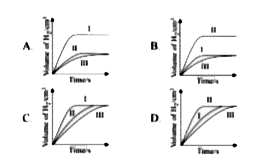Aparna heated a bi-metallic strip made of two different types of metals for some time.

After heating it, she observed that the metallic strip curved as shown in the figure. Which of the following would best explain the conclusion derived by Aparna about the experiment she had done?
Metal X is a better conductor of heat than metal Y.
Metal X is a poorer conductor of heat than metal Y.
Metal X is of better quality than metal Y.
Metal X is more flexible than metal Y.
The correct Answer is:A
As there is expansion of metal X is more than metal Y. Hence we can say that metal X is a better conductor of a heat than metal Y.
Topper's Solved these Questions
- NSO QUESTION PAPER 2018-19 SET ABOOK - SCIENCE OLYMPIAD FOUNDATION CHAPTER - NSO QUESTION PAPER 2018-19 SET AEXERCISE - ACHIEVERS SECTION
1 Videos
- NSO QUESTION PAPER 2018- 19 SET - BBOOK - SCIENCE OLYMPIAD FOUNDATION CHAPTER - NSO QUESTION PAPER 2018- 19 SET - BEXERCISE - ACHIEVERS SECTION
1 Videos
- NSO QUESTION PAPER 2019- 20 SET - BBOOK - SCIENCE OLYMPIAD FOUNDATION CHAPTER - NSO QUESTION PAPER 2019- 20 SET - BEXERCISE - ACHIEVERS SECTION
1 Videos
Similar Questions
Figure shown two adiabatic vessels, each containing a mass m of water at different temperature. The ends of a metal rod of length L, area of cross section. A and thermal conductivity K, are inserted in the water as shown in the figure. Find the time taken for the difference between the temperature in the vessels to become half of the original value. The specific heat capacity of water is s. Neglect the heat capacity of the rod and the container and any loss of heat top the atmosphere.

View SolutionA bimetalic strip is made of two strips A and B, having co-efficeint of linear expansion as αA and αB. If αA>αB which of the following describes the behavior fo the metallic strip when heated?
View Solution
Knowledge Check
A student was given two metal strips X and Y alongwith colourless nitrate solution to perform two separate displacement reactions. When the student placed metal strip X in nitrate solution for a considerable time he observed hat the solution turned blue and coating of silver meal was formed on the strip. And when the student immersed meal strip Y in silver nitrate solution for an equal time, the observed that the solution turned light green with the fomation of a coating of silver meal on the strip. The correct conclusion of the student about the identity of meals X and Y is:
AX is copper and Y is magnesiumBX is zinc and Y is copperCX is iron and Y is copperDX is copper and Y is ironThere is a rectangular metal plate in which two cavities in the shape of rectangle and circle are made, as shown with dimensions. P and Q are the centres of these cavities. On heating the plate, which of the following quantities increases?
 Aπr2BabCRDb
Aπr2BabCRDbMetals are extracted from their ores by a wide variety of techniques. The most common ores are oxides. Most metals are obtained by direct treatment of theirs ores with chemical agents, but the extraction of certain others require electrolysis. An example of the former type of process is the extraction of iron from its oxide, described by the following equation :
Fe2O3+3C→2Fe+3CO
The relative ease of extraction of a metal from its oxide can be estimated using the Ellingham diagram, as shown in the figure.
The diagram plots the free energies of formation of various oxides per mole of consumed oxygen as a function of absolute temperature.

Which of the following best explains why the free energy of formation of Fe2O3 becomes less negative as the temperature is increased.AThe free energy of formation is independent of the absolute temperature.BEntropy drops as a result of the consumption of oxygen.CAt low temperature, the free energy of formation becomes less dependent on the enthalpy of formation.DAs entropy increases, the free energy of formation increases.
Mitaali, a class 10 student wanted to study the speed of reactions of different acids with zinc metal. For this, she conducted the following experiments using zinc metal in excess.

She measured the volume of H2 gas produced at regular time intervals and summarised her results in a graphical form.
Which of the following graphs best represents the results obtained in experiments I, II and III?

View SolutionFour rods made of iron, wood, paper, and plastic are connected by a straight metallic rod, as shown in the given figure. The rods are heated by a hot filament placed near them. After sometime, it is observed that the temperature of the iron rod is more than that of the other three rods.

Heat transfer whitin the rods takes place by
View SolutionRadha arranged three set-ups as shown in the following figures. She observed that reactions take place in all the three experiments. Answer the questions that follow:

What can be metal 'Y?
View SolutionRadha arranged three set-ups as shown in the following figures. She observed that reactions take place in all the three experiments. Answer the questions that follow:

Arrange the four metals in order of increasing reactivity.
View Solution
Figure. Shows the graphs of elongation versus temperature for two different metals. If these metals are employed to form a straight bimetallic strip of thickness 6 cm and heated, it bends in the form of an arc, the radius of cuvature chaging with temperature approximately as shown in the figure. The linear expansivities of the two metals are
View Solution
